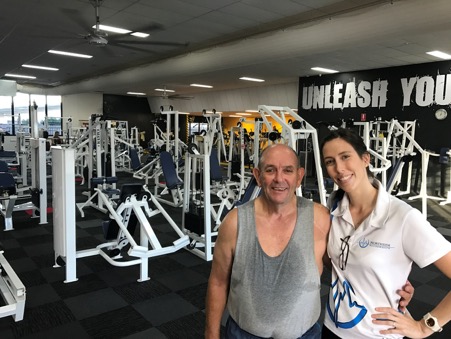By Eloise Morrison, Accredited Exercise Physiologist
We all know how effective exercise can be for treating certain bodily concerns/ailments. But did you know exercise can help with mental health disorders too? At Northside Allied Health we currently service a range of clients with diagnosed mental health disorders such as Major Depressive Disorders, Generalized Anxiety Disorders and Post Traumatic Stress Disorder (PTSD) – which we will be looking at in today’s blog post.
Exercise and Sports Science Australia (ESSA) advocate that engagement in exercise for people with Mental Health disorders can potentially: *3
- Reduce symptoms of depression, anxiety and stress
- Decrease social isolation
- Improve sleep quality
- Increase self-esteem
- Improve quality of life
What exactly is PTSD?
According to both the Black Dog Institute and Beyond Blue, Post-traumatic stress disorder is a group of stress reactions that can develop in people who have been through OR witnessed a traumatic event. *1&2 This can include but is not limited to; death, serious injury or sexual violence to ourselves or to others, war or torture and/or disasters such as bushfires or floods. As a result of a traumatic event such as the above, a person can develop or experience PSTD symptoms including but not limited to; feelings of intense fear, helplessness, horror and/or anger.
Who can experience PTSD?
The short answer is anyone exposed to a traumatic event. An individual is at a greater risk if the event involved deliberate harm such as physical or sexual assault or they have had repeated traumatic experiences such as childhood sexual abuse or living in a war zone.
Beyond Blue reports that around 12 per cent of Australians will experience PTSD in their lifetime.*1
How can exercise potentially help someone with PTSD?
Exercise as therapy for PTSD (in conjunction with medications and counselling) seeks to reduce symptoms of depression, anxiety and stress, decrease social isolation, improve sleep quality, increase self-esteem and improve quality of life, increase engagement with treatment and service utilisation and reduce cravings and withdrawal in substance use disorders (SUD) and alcohol addiction. *3
Below is an interview with current Northside Allied Health client William ‘Bill’ Fitzgerald. Bill is a Vietnam Veteran diagnosed with PTSD.
 Could you explain how you develop PTSD and how long you have had it?
Could you explain how you develop PTSD and how long you have had it?
I developed PTSD or rather PTSD type symptoms after serving with the Australian military in Vietnam. I suppose I’ve had it since I left Vietnam (1969) but it wasn’t diagnosed till around 20 years later. With the PTSD also came alcohol dependence and depressive and aggressive symptoms/tendency.
Could you explain the impact this has had on your day to day life?
It really made me become an angry ‘loner’ for a while. It impacted my family life and my aggression levels and I took a lot of my issues out on those closest to me. I also still cannot stand crowds and I find myself avoiding certain situations/activities as not to trigger my PTSD.
Could you explain how exercise is helping you manage your PTSD?
Well, without exercise and the community here at the gym, I think I would be in a lot worse place right now than I am. Exercise sort of helps me get my mind off the outside world and have an escape where I can mix in with other people who understand what I am going through and achieve something positive.
 Are you happy you’ve started regularly exercising with an Exercise Physiologist?
Are you happy you’ve started regularly exercising with an Exercise Physiologist?
Yes. It is hard for me sometimes but I’m glad I do it.
References:
- https://www.beyondblue.org.au/the-facts/anxiety/types-of-anxiety/ptsd
- https://www.blackdoginstitute.org.au/mental-health-wellbeing/post-traumatic-stress-disorder/what-is-ptsd
- ESSA Consensus Statement: On the role of Accredited Exercise Physiologists within the treatment of mental disorders.

